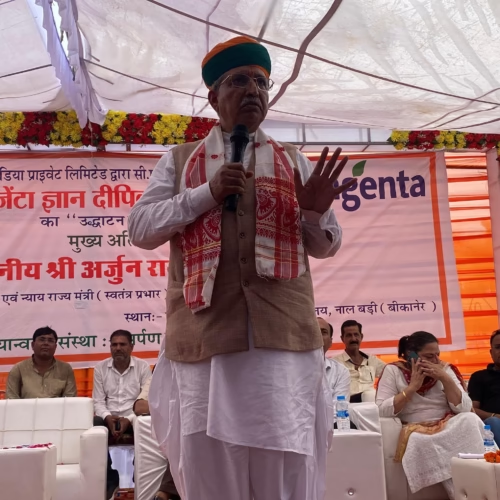China’s PLAAF to Assist Pakistan in Launching its Own Air Show to Counter India’s Aero India; First Edition Planned for Late 2026/Early 2027 Under NASTP
Islamabad/Beijing, February 9, 2025 – In a significant move to counter India’s premier aerospace and defense exhibition, Aero India, the Pakistan Air Force (PAF), with technical and logistical support from China’s People’s Liberation Army Air Force (PLAAF), is set to organize its own international air show. The first edition of this event is tentatively scheduled for late 2026 or early 2027 and will be held under the aegis of the National Aerospace Science and Technology Park (NASTP), a strategic initiative of Pakistan.
A Strategic Move in the Region
The decision to host an international air show comes amid growing defense collaboration between China and Pakistan, particularly in the aerospace domain. According to sources within Pakistan’s Ministry of Defence, the new air show is envisioned as a direct counter to India’s Aero India, a globally recognized biennial event held in Bengaluru that showcases cutting-edge advancements in aviation, defense, and space technologies.
Pakistan’s air show is expected to serve as a platform to display its indigenous aircraft manufacturing capabilities, promote defense exports, and strengthen its strategic ties with international aerospace companies. The event is also expected to attract participation from Chinese aviation firms, defense manufacturers, and select partners from other allied nations.
China’s Growing Influence in Pakistan’s Aerospace Industry
China’s PLAAF and major Chinese aerospace firms, including Aviation Industry Corporation of China (AVIC) and China National Aero-Technology Import & Export Corporation (CATIC), are expected to play a crucial role in supporting Pakistan’s efforts to launch the air show. Chinese assistance will likely include aircraft displays, technological demonstrations, and knowledge sharing for event organization.
The move is in line with Beijing’s broader strategy to enhance Pakistan’s self-reliance in the defense sector while countering India’s growing dominance in the region’s aerospace industry. China has already played a pivotal role in Pakistan’s aviation sector, collaborating on projects like the JF-17 Thunder multirole fighter and Project AZM, Pakistan’s next-generation fighter aircraft initiative.
Location and Potential Participants
While the final location for the air show has not been confirmed, sources suggest that Kamra, Karachi, or Islamabad could be potential venues, given their existing aerospace infrastructure. The event is expected to feature:
- PAF’s fighter fleet, including the JF-17 Thunder, J-10C, and F-16s
- Chinese military aircraft, such as the J-20 stealth fighter and other advanced platforms
- Drones and UAVs developed by China and Pakistan
- Showcasing of Pakistan’s missile capabilities
- Participation from friendly nations including Turkey, Azerbaijan, and Middle Eastern countries
Additionally, China is likely to use this opportunity to promote its export-oriented aircraft, such as the FC-31 stealth fighter and Wing Loong drones, to potential buyers in the region.
Geopolitical Implications
The decision to host an international air show with Chinese support is seen as part of Pakistan’s broader efforts to enhance its defense diplomacy and counterbalance India’s growing influence in the global defense market. Aero India has long been a hub for global defense manufacturers, attracting major firms like Lockheed Martin, Boeing, Dassault Aviation, and Airbus. Pakistan’s new initiative aims to establish a rival event that could serve as an alternative for Chinese and other non-Western defense manufacturers.
Defense analysts believe this move could further deepen the China-Pakistan defense nexus, positioning Islamabad as a key player in Beijing’s larger geopolitical strategy. However, experts also highlight potential challenges, including Pakistan’s limited defense industrial base compared to India and the challenge of attracting global defense firms to an event heavily influenced by China.
Pakistan’s Vision for Aerospace Industry
The air show is expected to be a key milestone in Pakistan’s National Aerospace Science and Technology Park (NASTP) initiative, which aims to transform the country into a regional aerospace hub. Under NASTP, Pakistan is focusing on enhancing indigenous aircraft manufacturing, avionics development, and drone technology. The event could provide an opportunity to showcase progress in these areas and attract foreign investments.
Conclusion
As Pakistan gears up to host its first-ever international air show, with strong backing from China, the development signals a new chapter in South Asia’s defense and aerospace competition. With both India and Pakistan aiming to position themselves as key players in the global defense industry, this initiative is likely to further intensify the regional arms race.
Observers will be closely watching how Pakistan navigates the logistical, financial, and strategic challenges of hosting such a high-profile event and whether it can emerge as a credible alternative to Aero India.















Add Comment